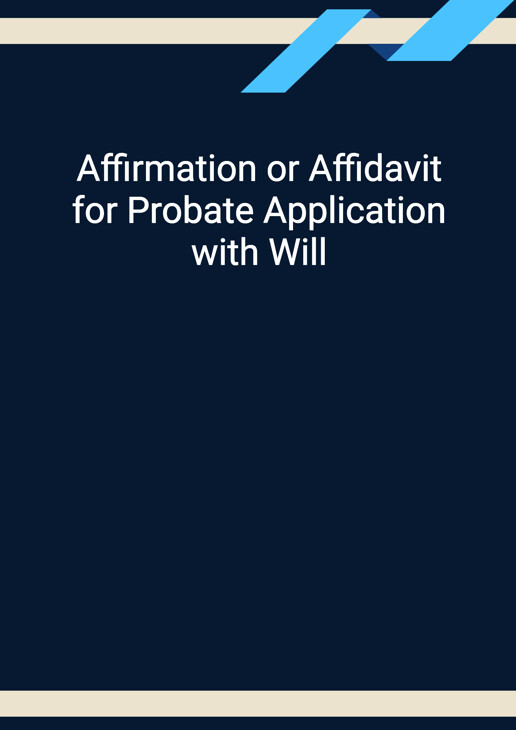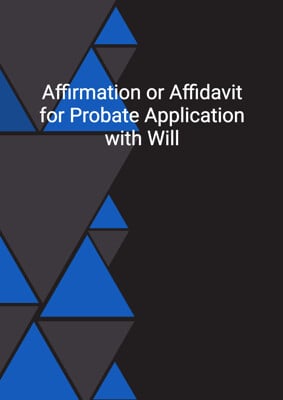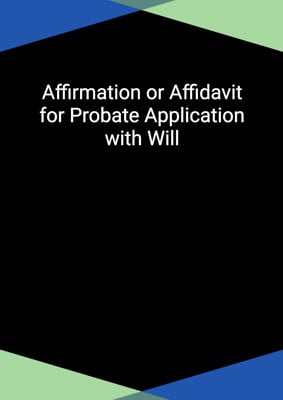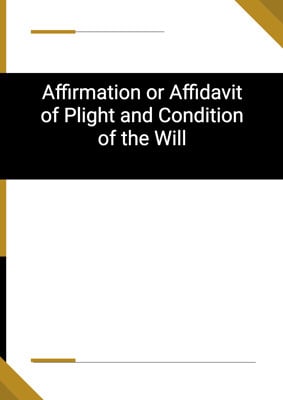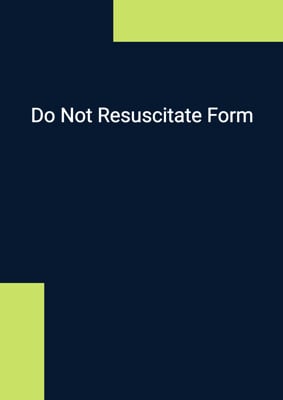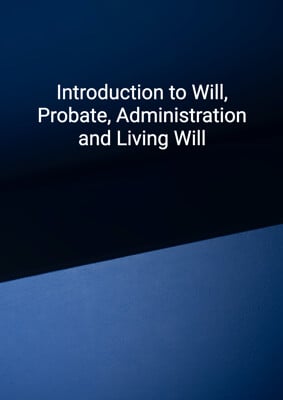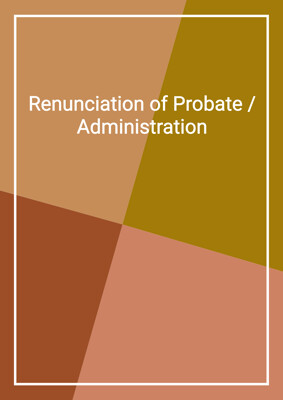How to Tailor the Document for Your Need?
01
Create Document
Fill in the details of the parties. You can click the "Fill with Member’s Information" button to complete it with information saved to your account.
02
Fill Information
Please fill in any additional information by following the step-by-step guide on the left hand side of the preview document and click the "Next" button.
03
Get Document
When you are done, click the "Get Document" button and you can download the document in Word or PDF format.
04
Review Document
The document should be signed by the authorised signatory (or directors of a company) and witnessed to complete the formality.
Document Preview
Document Description
The document titled 'Affirmation or Affidavit for Probate Application with Will' is a legal document that is used in the court of domicile for the purpose of applying for probate. It is specifically designed for cases where the deceased has left a will. The document begins with an introduction that explains the purpose and importance of the document. It then provides a detailed description of each section of the document.
Section 1: Introduction
The introduction of the document provides a brief overview of its purpose and importance. It explains that the document is used to apply for probate in cases where the deceased has left a will. It emphasizes the importance of this document in the probate process.
Section 2: Executor Information
This section provides information about the executor of the will. It includes details such as the name, position, and address of the executor. It also mentions whether there is a sole executor or multiple executors.
Section 3: Domicile Information
This section provides information about the domicile of the deceased. It states the place of domicile and emphasizes its significance in the probate process.
Section 4: Predeceased Executor
If there is a predeceased executor, this section provides details about their death. It mentions the place and date of death and whether they had proved the will before their death.
Section 5: Alias Information
If the deceased had used an alias, this section provides details about it. It explains that the deceased made and executed the will using the alias and held certain assets in the alias's name. It clarifies that the alias and the true name of the deceased refer to the same person.
Section 6: Estate Information
This section provides information about the estate of the deceased. It states that there is no other property devolving to the personal representatives of the deceased, apart from what is mentioned in the estate duty commissioner's provisional schedule of property. It also mentions the provisional principal value of the estate and any payments payable to the estate by the government of domicile.
Section 7: Administration and Inventory
This section emphasizes the responsibilities of the executor. It states that the executor will administer the estate according to the law, provide a true and perfect inventory of the estate and effects, and render a just and true account whenever required by law.
Section 8: Probate Application
This section provides information about the probate application. It states whether the applicant is one of the executors or the sole executor named in the will. It also mentions the power reserved to the other executor, if applicable.
Section 9: Conclusion
The conclusion of the document includes a statement of affirmation or oath, depending on whether the document is an affirmation or an affidavit. It includes the name and address of the affirmer or affiant, as well as the date of affirmation or oath.
In conclusion, the document titled 'Affirmation or Affidavit for Probate Application with Will' is a crucial legal document used in the probate process. It provides detailed information about the executor, domicile, predeceased executor, alias, estate, administration, and probate application. Its importance lies in its ability to accurately represent the deceased's wishes and ensure a smooth probate process.
How to use this document?
1. Enter the necessary information: Fill in the court of domicile and the address of the deceased. This ensures that the document is properly filed and identifies the location of the probate application.
2. Provide executor details: If there is a sole executor, enter their name, position, and address. If there are multiple executors, provide their names and ages. This ensures that the executor(s) are properly identified.
3. Specify domicile information: State the domicile of the deceased. This ensures that the probate application is filed in the correct jurisdiction.
4. Include predeceased executor information (if applicable): If there is a predeceased executor, provide details of their death, including the place and date. Specify whether they had proved the will before their death. This ensures that the court is aware of any changes in the executorship.
5. Provide alias information (if applicable): If the deceased used an alias, explain the relationship between the true name and the alias. Specify any assets held in the alias's name. This ensures that the court understands the connection between the different names.
6. Describe the estate: If there is no other property devolving to the personal representatives of the deceased, state this. Include the provisional principal value of the estate and any payments payable to the estate by the government of domicile. This provides an overview of the estate's value.
7. Emphasize executor responsibilities: Highlight the executor's duty to administer the estate according to the law, provide an inventory of the estate and effects, and render an account when required. This ensures that the executor understands their obligations.
8. Specify probate application details: State whether the applicant is one of the executors or the sole executor named in the will. If there is another executor, mention the power reserved to them. This clarifies the role of the applicant in the probate process.
9. Affirm or make oath: Depending on whether the document is an affirmation or an affidavit, affirm or make oath that the contents of the document are true. Include the name and address of the affirmer or affiant, as well as the date of affirmation or oath. This validates the document.
Follow these steps to properly complete and use the 'Affirmation or Affidavit for Probate Application with Will' document. Remember to consult legal professionals for specific advice and guidance related to your situation.
Not the right document?
Don’t worry, we have thousands of documents for you to choose from:
